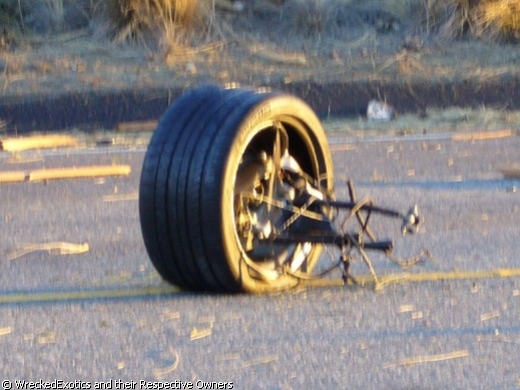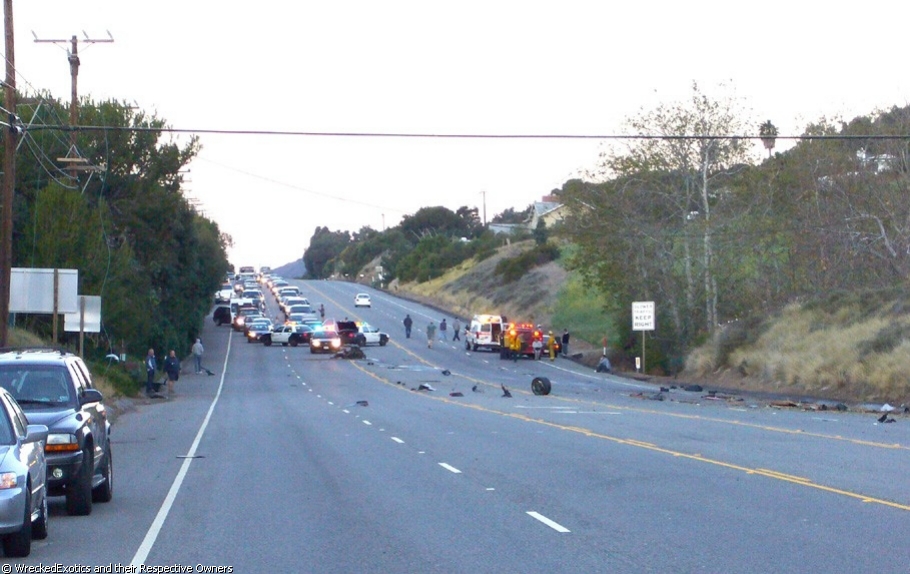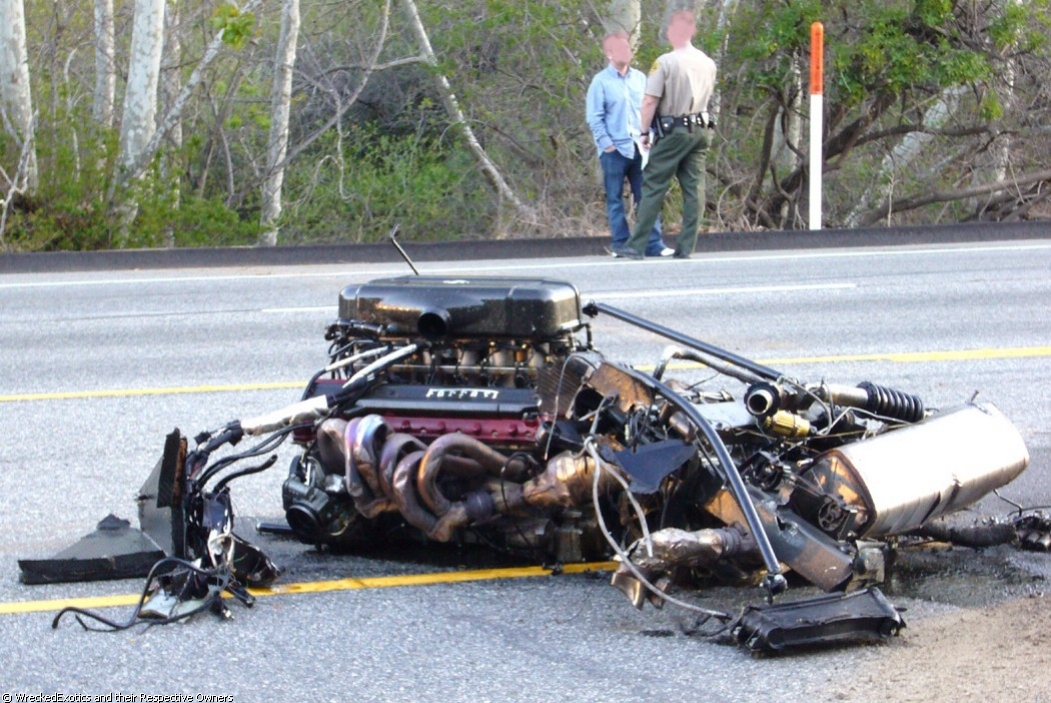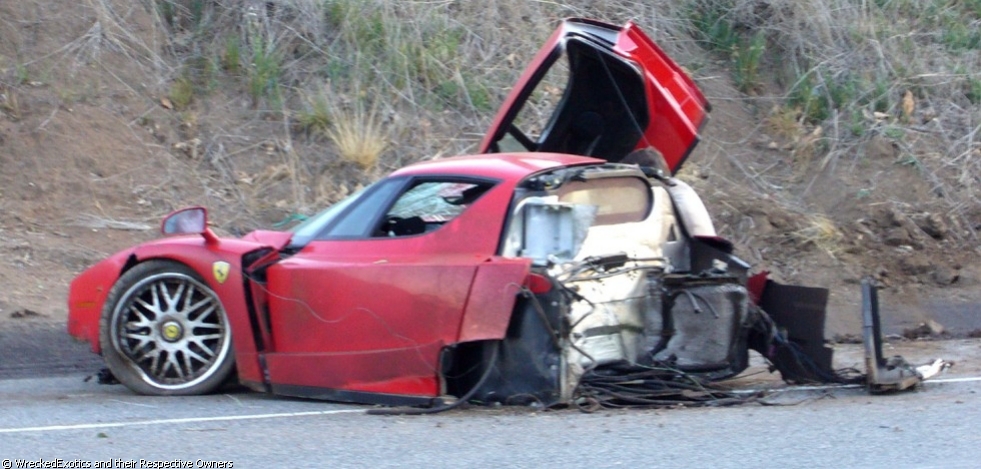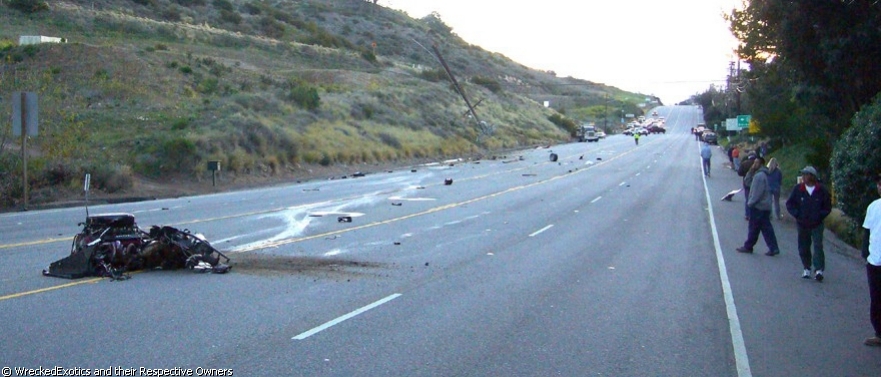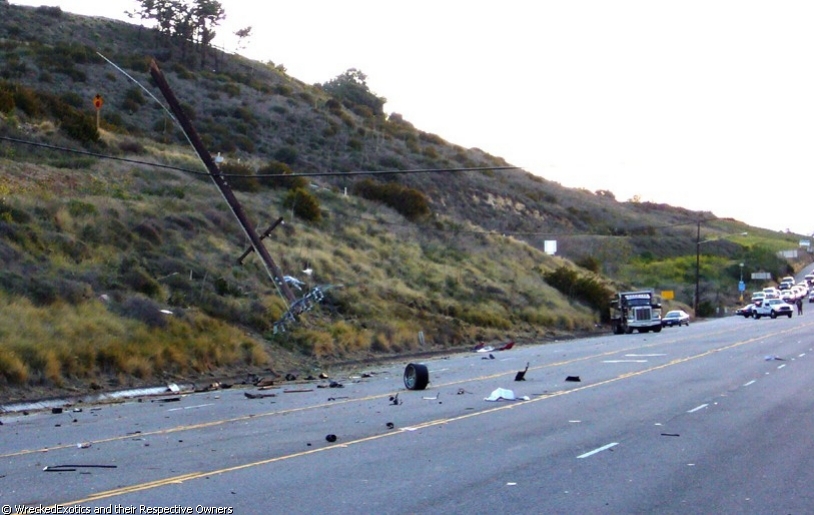Ferrari Case Takes New Twist With Possible Tie to Bus Agency
The trail leads to a nonprofit operating out of a Monrovia repair shop. More puzzling is its police force and ‘anti-terrorism’ unit.
By Richard Winton and David Pierson, Times Staff Writers
March 3, 2006
As sheriff’s detectives investigate last week’s crash that destroyed a $1-million Ferrari, they are now looking into an obscure nonprofit organization that provides disabled people with transit in the San Gabriel Valley.
The car’s owner, a former video game executive from Sweden, told Los Angeles County sheriff’s deputies at the scene of the Feb. 21 accident in Malibu that he was deputy commissioner of the San Gabriel Valley Transit Authority’s police anti-terrorism unit, detectives said Thursday.
A few minutes after the crash, two unidentified men arrived at the scene, flashing badges and saying they were from “homeland security,” according to Sheriff’s Department officials.
Deputies allowed the men into the accident scene, where they spoke to Stefan Eriksson before leaving, Sgt. Phil Brooks said.
Sheriff’s officials on Thursday said they now want to question them.
“We would like the public’s help with any information about these men or the crash,” Brooks said.
They are also looking into the transit organization to see what connection, if any, it has to the case. Brooks said detectives believe the two men from “homeland security” received their badges from the transit authority.
No one was injured when the rare Ferrari Enzo traveling 162 mph smashed into a power pole on Pacific Coast Highway. But the case continues to generate interest because the Ferrari is one of only 400 built, and detectives have struggled to understand what happened.
Eriksson told investigators he was a passenger in the Ferrari and that the driver was a man named Dietrich, who fled from the scene. But officials have been skeptical, noting that Eriksson had a bloody lip and the only blood found was on the driver’s side airbag.
On Thursday, Brooks said detectives now doubt initial reports that the Ferrari was racing a Mercedes SLR. Detectives had interviewed a second man who said he was a passenger in a Mercedes SLR that he said was racing the Ferrari at the time.
“There was no Mercedes SLR,” Brooks said. “Simply, there was a Ferrari with two people in it. One of these men was driving.”
Just as murky is Eriksson’s connection to the San Gabriel Valley Transit Authority.
The organization is a privately run nonprofit that has agreements with Monrovia and Sierra Madre to provide bus rides for disabled residents.
On its website, the San Gabriel Valley Transit Authority lists its address as 148 E. Lemon Ave. in Monrovia. The location is Homer’s Auto Service, an auto repair shop.
A transit authority bus was parked in one of its driveways, but nothing on the storefront indicated it was a headquarters for the agency. Inside, a young woman, who declined to give her name, said she was a dispatcher for the transit authority. She telephoned someone she said was an agency official, who declined to be interviewed.
According to the website, the organization also has its own police department with a chief, detectives and marked police cruisers. Sheriff’s investigators said Eriksson told deputies that he was deputy commissioner of the department’s anti-terrorism unit.
But Monrovia Police Chief Roger Johnson said he found that the department is less than meets the eye.
“I don’t know if they have a police department to go with the website,” he said.
In a brief interview, transit authority board member Yosuf Maiwandi said Eriksson had helped the police department’s anti-terrorism unit with camera technology for the paratransit vehicles.
Eriksson’s civil attorney, Ashley Posner, is chairman of the transit authority board. Posner declined to comment; Eriksson’s criminal attorney did not return calls seeking comment.
Officials in cities where the agency does business said they didn’t know why a small transit authority needs a police department.
“We do not see the need for a ground transportation system for handicapped and disabled folks to have a police agency,” Monrovia City Manager Scott Ochoa said. “We warned them that if the police agency operated with them in the city of Monrovia, it would jeopardize their [transit] agreement with us.”
It remains unclear how Eriksson, who lives in a gated Bel-Air estate, came to work with the transit agency.
Alan Deal, spokesman for the Commission on Peace Officer Standards and Training, said he has never heard of the transit authority’s police department. Most police agencies are part of the commission, which governs training standards for officers in the state.
But Deal said some specialized departments are not members, and there are provisions in state public utilities law that allow for transit police agencies to be run by private transit providers.
Sheriff’s Sgt. Brooks said Eriksson voluntarily gave a DNA swab, which will be used to determine whether his blood was on the driver’s side airbag.
Eriksson had a blood-alcohol level of 0.09% — just over the 0.08% limit — and could face drunk driving charges if he was the driver, Brooks said.
Another mystery is the Glock ammunition magazine found near the crash. Brooks said detectives believe it’s connected to the crash but don’t know how.
